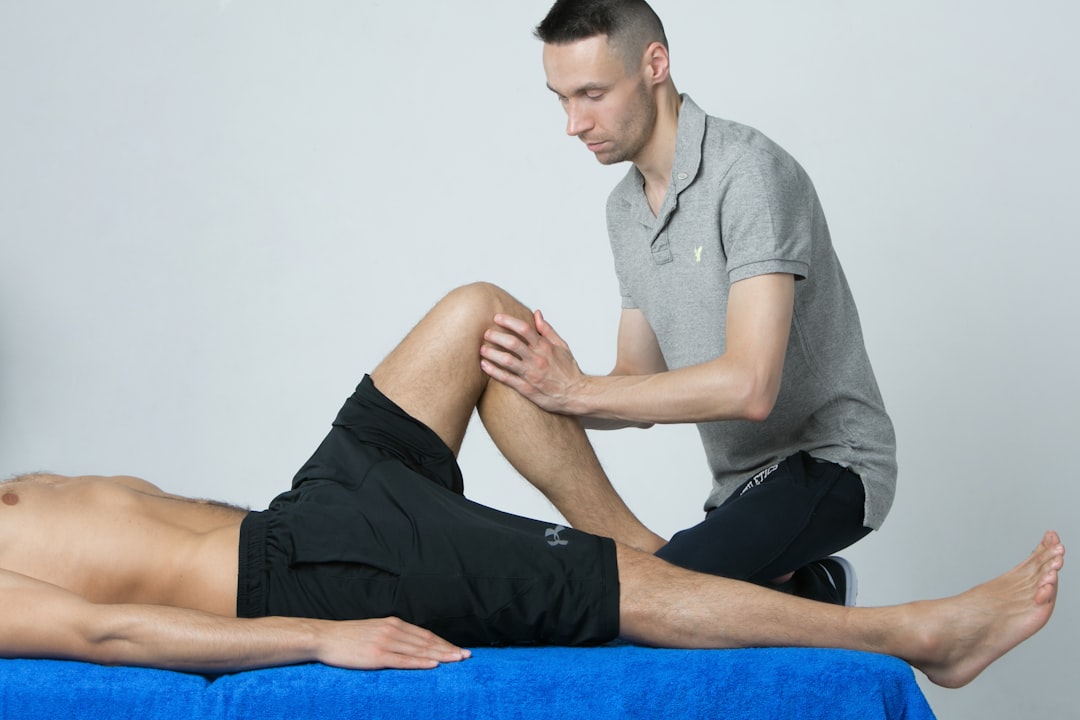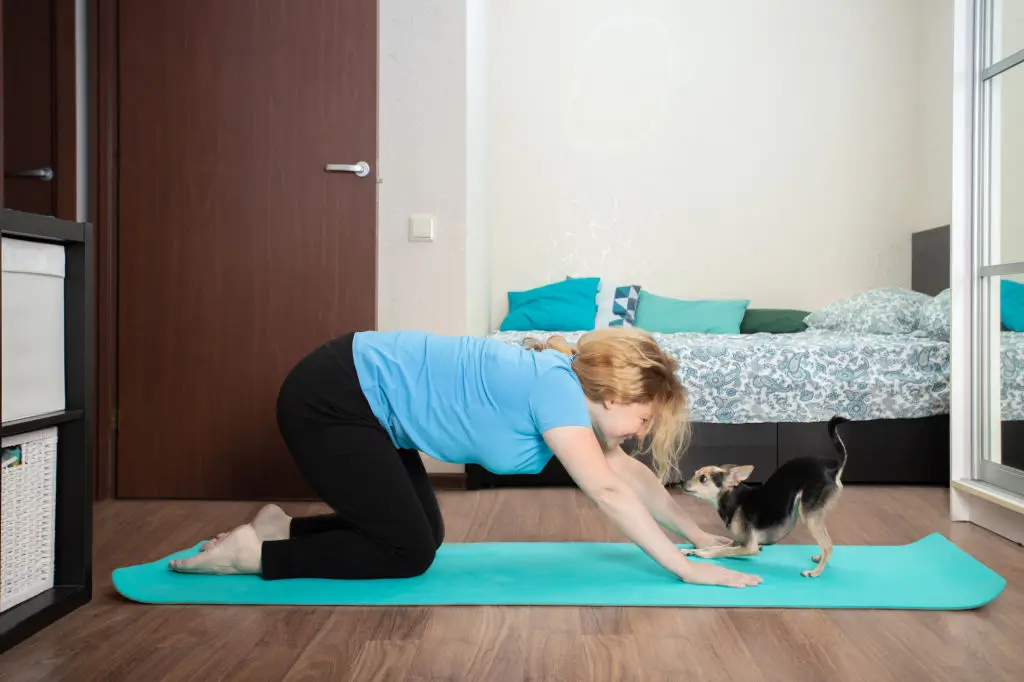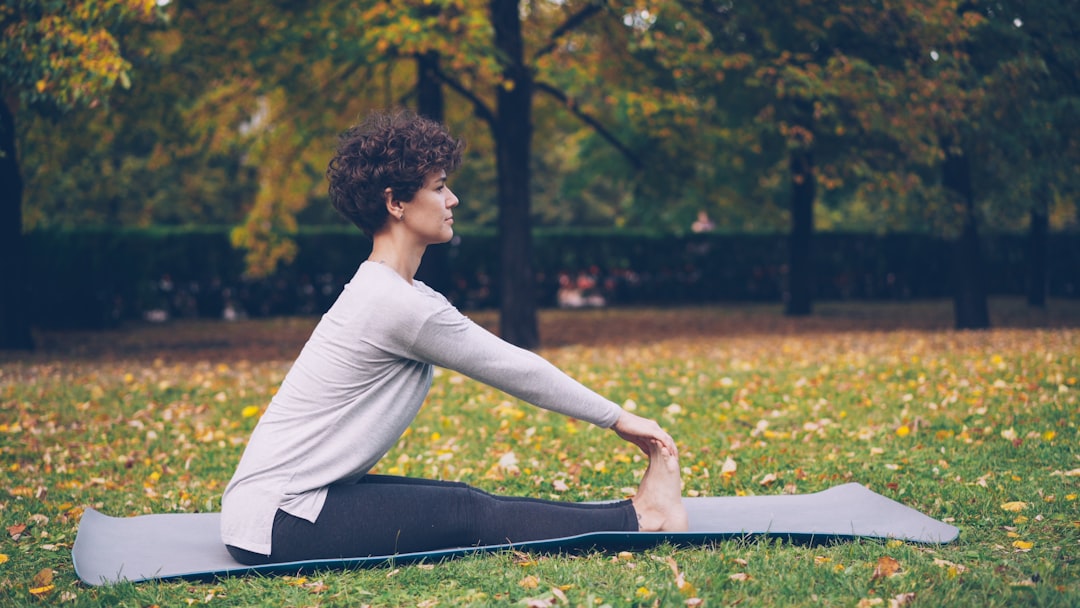Sciatica Solution: 11 Easy Stretches & Lifestyle Tips to Kick Pain to the Curb—No Equipment Required
Sciatica pain can turn the simplest tasks—like sitting at your desk or getting out of bed—into a daily struggle. If you’ve been searching for gentle, equipment-free ways to ease that radiant nerve discomfort, you’re in the right place. Sciatica is more than just a pain in the lower back; it’s a signal from your body asking for thoughtful attention. But you don’t need expensive gear or a gym membership to respond. In fact, the most powerful tools can be your breath, your awareness, and a few caring movements. This guide brings together eleven supportive stretches and daily strategies, each designed to help you reclaim comfort, movement, and confidence—right from your living room or bedside. Imagine feeling empowered to make change, one gentle motion at a time, as you learn that small steps can create real, lasting relief. Let’s celebrate the strength it takes to listen to your body and explore these simple ways to kick sciatica pain to the curb. You do not have to do all of these at once—just start where you are, and let each moment of self-care guide you forward.
1. Seated Sciatic Nerve Flossing

This gentle nerve mobility exercise is a simple way to soothe sciatica without leaving your chair. Start by sitting tall, both feet flat on the floor and back straight but relaxed. Keeping one foot grounded, slowly extend your affected leg, flexing at the ankle so toes point skyward. Now, gently straighten your knee until you feel a mild stretch—not pain—along the back of your thigh and calf. As you extend, tilt your head forward as if looking at your lap. Then, as you slowly lower the leg, bring your head back up. Repeat this flowing motion for 8-10 repetitions, breathing steadily. The goal is to “floss” the sciatic nerve, gradually improving its mobility and reducing any pinched sensations. Not all days are created equal—on tougher mornings, simply performing the motion in a smaller range is perfectly fine. If you notice a tingling sensation, pause, rest, and double-check your posture. Remember: gentle movement is more helpful than forcing. If your symptoms worsen, adjust the angle or stop and consult your healthcare provider. There’s progress in every attempt, and your patience is key.
2. Lying Knee-to-Chest Stretch

Releasing the lower back can do wonders for sciatica relief. Start by lying on your back, knees bent and feet flat on the ground. Draw one knee slowly toward your chest, clasping both hands just below your knee. Breathe deeply, letting your lower back relax into the surface beneath you. Hold for 20–30 seconds, then switch to the other side. For an added gentle stretch, try bringing both knees toward your chest—only if it feels comfortable. This simple pose helps reduce tension in the lower back and glutes, both common trouble spots for sciatic nerve pressure. If getting down onto the floor is difficult, a firm bed can offer a supportive alternative. Avoid pulling your knee too hard; tightness is a signal to ease up, not push further. Modify by placing a towel behind your knee for gentler leverage. A sense of ease should always come before intensity. If sharp pain radiates down your leg, stop and rest. Gentle, thoughtful repetition over several days will bring you more lasting change than any single attempt.
3. Supine Figure-Four Stretch

This classic stretch gently opens the hip, relieves glute tension, and can provide remarkable comfort for sciatic discomfort. While lying on your back, bend both knees, feet on the floor. Cross your affected ankle over the opposite knee, forming a “figure four.” Using your hands, reach through the gap and gently draw your bottom leg toward your chest. Pause when you feel a mild stretch in the back of your hip and glute area. Keep your upper body relaxed, jaw unclenched, and breathe with intention. Hold the position for 20–30 seconds. Switch sides to keep both hips balanced. If gripping your leg is uncomfortable, try looping a strap or towel behind your leg for a more accessible modification. The stretch should never create sharp or shooting pain. Instead, look for a gentle, relieving pull that signals you’re working precisely where you need it. If hip tightness is significant, simply maintaining the ankle-crossed position is enough for starters. Over time, your flexibility will grow, and with it, your day-to-day comfort.
4. Standing Hamstring Reach

Hamstring tightness frequently contributes to sciatica pain, making this stretch a valuable addition to your routine. Stand with your feet hip-width apart, knees soft—not locked. Place your hands on your thighs for support, and gently hinge forward at your hips (not your waist), keeping your back as straight as possible. Slide your hands down your legs until you feel a mild stretch in the back of your thighs. Hold for 20 seconds, breathing slowly. Rise gently to standing. If your balance feels unsteady, perform this with your hands braced on a countertop or sturdy table. Avoid bouncing or reaching to the floor; the goal is steady, sustained ease, not a dramatic stretch. For anyone with lower back sensitivity, only bend forward as far as feels safe. Imagine lengthening your spine as you move. Gradually, your hamstrings will become more flexible, reducing strain on the sciatic nerve during daily movement. Every safe attempt counts, so celebrate even the smallest feeling of release.
5. Gentle Cat-Cow Spinal Flow

This timeless movement boosts back flexibility and encourages better nerve mobility. Start on your hands and knees, wrists beneath shoulders and knees under hips. As you inhale, slowly arch your back—lift tailbone and head, and let your belly drift toward the floor. On your exhale, gently round your back, tucking chin and tailbone, like an upward-facing arch. Continue moving with your breath for 8–10 cycles at your own pace. This flowing sequence massages the low back, eases stiffness, and brings gentle awareness to your spine’s alignment. If traditional positions on hands and knees aren’t accessible for you, place a cushion under your knees or perform the movements seated by arching and rounding your back in your chair. Every gentle repetition invites greater range and comfort. The cat-cow flow isn’t about replicating a yoga class; it’s about noticing what your back needs today and giving it supportive movement. As always, move only within pain-free ranges and embrace the process of gradual improvement.
6. Maintain Mindful Posture Throughout the Day

Holding yourself with mindful, natural alignment can relieve tension on the sciatic nerve and prevent flare-ups. For sitting, plant your feet flat on the ground, keep knees level with hips, and let shoulders drop away from your ears. Try not to slouch or cross your legs for long periods. When standing, imagine a string gently lifting you from the crown of your head—stacking ears over shoulders, shoulders over hips, and hips over your ankles. Adjust your workstation or seating as needed for comfort and sustainability. Posture is a practice, not a destination; perfection is not the goal. Instead, catch yourself in small moments, gently realign, and return to your day. These daily cues—rather than hours of striving—create a powerful foundation for long-term relief. Your body appreciates every kind correction you give it, and each mindful shift protects your sciatic nerve as you move through work, errands, and rest.
7. Break Up Sitting Time with Movement Snacks

Sitting for prolonged periods is a known trigger for sciatica discomfort. Breaking up your day with little “movement snacks”—even just a minute or two every half hour—can keep nerve pain at bay. Set a reminder on your phone or use a kitchen timer to prompt yourself. Stand, stretch, walk a short loop, or even perform a few gentle standing hamstring reaches (from tip #4). Each small break rehydrates tissues, encourages circulation, and prevents your nerve from getting trapped or compressed. Desk-based stretches, such as shoulder rolls or simple seated twists, are also helpful. Over time, this shift in routine can make a big impact. It’s not about hitting a step-count goal; it’s about honoring your comfort zone and resiliency. By sprinkling movement throughout your day, you’ll notice fewer aches and a lighter mood—proof that little efforts add up faster than we think, especially when sciatica tries to slow us down.
8. Use Gentle Walking to Ease Pain

Few things support sciatic nerve health like the steady rhythm of gentle walking. The motion activates muscles along your back and legs, increases circulation, and helps the nerve glide naturally. Begin with short walks—even around your living room or down the block. Focus on upright posture, steady breath, and a pace that supports comfort rather than exhaustion. Pay attention to any changes in pain; if a walk increases symptoms, slow down or shorten your route, then allow your body to rest. Walks can be a helpful midday “reset” or a way to unwind after a long day. On hard days, even shuffling in place counts. Celebrate the simple act of moving, which steadily creates the groundwork for recovery. Remember, progress looks different for everyone. Consistency and kindness to yourself are far more powerful than distance or speed. By taking a step—literally and figuratively—you’re already supporting your own healing.
9. Try Ice and Heat for Soothing Relief

Alternating cold and heat can provide much-needed respite during tough pain cycles. Apply a cold pack wrapped in a towel to the lower back for up to 15 minutes to help reduce inflammation and numb sharp pain. After the initial pain calms, a gentle heat pack can encourage circulation and ease lingering muscle tightness. Never place ice or heat directly on the skin, and always monitor your skin for discomfort or unusual color changes. These methods can supplement your stretching, but remember—they’re not a substitute for addressing movement and posture. If pain becomes more intense, pause treatment and contact your provider. Choose the strategy that offers you most comfort, and always listen to your body’s response. Relief may not come instantly, but each safe attempt is a way of caring for yourself throughout the day, and that matters in your healing journey.
10. Make Sleep Your Superpower

Quality rest gives your body a valuable window for healing and helps your nerves recover from daily use. Focus on creating a calm bedroom setting, limiting screens, and using ergonomic pillows for better spinal alignment. If side-sleeping, try placing a pillow between your knees to reduce pressure on your lower back. For back sleepers, a pillow beneath your knees can help maintain your spine’s natural curve. Develop a simple, soothing bedtime routine—like light stretching or slow breathing—to prepare for rest, even on nights when discomfort is present. Accept that some nights will be restless, but trust that with consistent gentle care, your patterns can improve. A supportive sleep routine is about more than just pain relief—it reinforces your body’s resilience, quiets stress, and prepares you for another day of progress. Good sleep is a priority worth protecting, and even small shifts can pay big dividends over time.
11. Know When to Seek Professional Guidance

While self-care strategies make a strong foundation, there are times when expert support is essential. If you experience sciatica symptoms that worsen with time, include loss of sensation, severe weakness, bowel or bladder changes, or unrelenting pain, reach out to your healthcare provider promptly. Early intervention can shorten recovery time and prevent long-term challenges. Don’t hesitate to seek physical therapy or specialist guidance, especially if you’re unsure about technique or need personalized modifications. Asking for help is a sign of strength, not setback, and ensures you have the right tools for lasting comfort. Trust in your own experience—you know your body best. Professional partners can help you return more quickly to joyful, pain-free movement, building on every effort you’ve made at home. A caring team is always a resource worth welcoming on your healing journey.
Your Comfort Is a Journey—Not a Race

Each stretch, mindful habit, and moment of rest adds up to something profound: a renewed sense of agency in managing your sciatica pain. It isn’t about achieving perfection overnight or outpacing anyone else’s process. It’s about honoring the wisdom of your body, caring for its signals, and believing in your capacity for steady improvement—no matter how gradual. There will be days when relief feels far away and stretches are hard to attempt. On those days, the act of gentle self-compassion is as important as any physical movement. Celebrate progress as it unfolds, and know that even the smallest change matters. Your journey with sciatica is uniquely yours, and every supportive choice you make is a victory. As you continue to move, stretch, and listen to your needs, you nurture resilience that lasts. Here’s to a future where comfort, confidence, and movement are always within reach—because you deserve to feel vibrant in every stage of life.